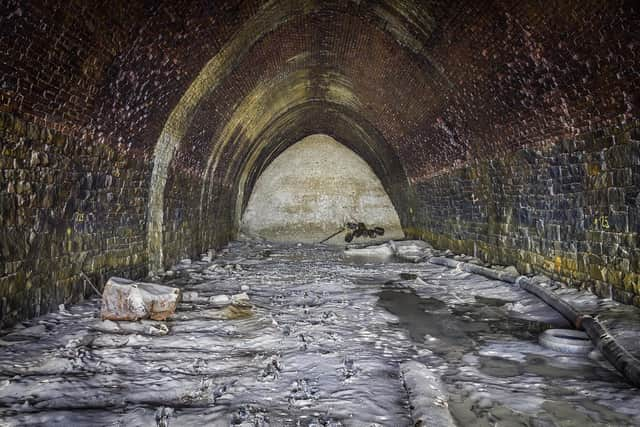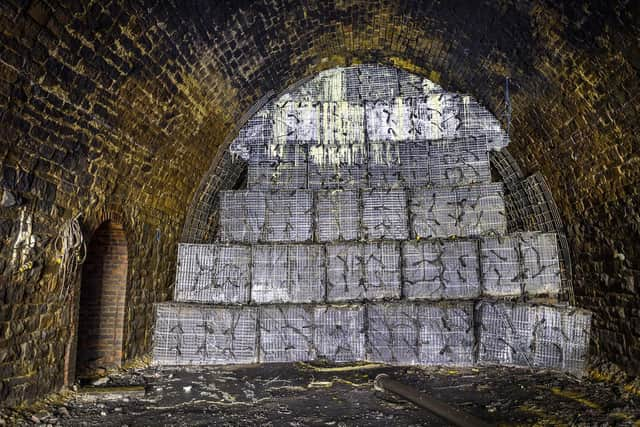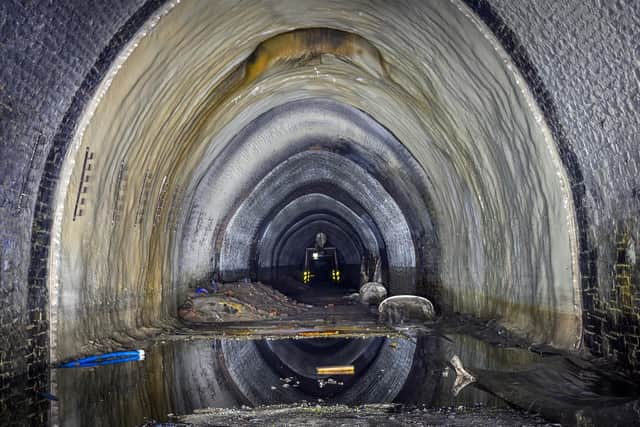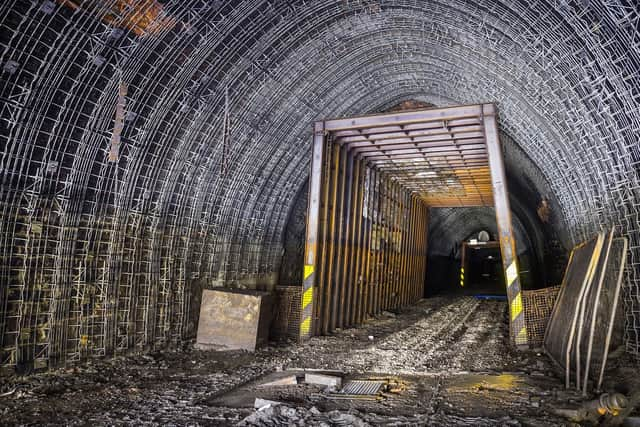Campaigners' anger after photographs emerge of controversial works at Queensbury Tunnel
and live on Freeview channel 276
Queensbury Tunnel would serve as a strategic link in the proposed Bradford-Halifax Greenway, linking two of West Yorkshire’s biggest conurbations. But National Highways, which manages the Historical Railways Estate of 3,100 disused railway structures on the Department for Transport’s behalf, is seeking planning permission to partly infill the 144-year-old engineering feat. Almost 7,800 people have so far submitted objections.
Campaigners say enabling works, which started in October 2018, were originally programmed to last three months and cost £550,000, but their scope had to be extended after National Highways failed to pay the £50 annual rent on a pumping station which kept the 1.4-mile long tunnel dewatered. Campaigners say flooding resulted in costs mushrooming to almost £7.3m, with the contractor remaining on site for three years.
Advertisement
Hide AdAdvertisement
Hide AdThe photographs, taken late last year by three urban explorers, show the tunnel blocked in two places. Campaigners say in October 2019, National Highways tipped hundreds of tonnes of stone down No.2 Shaft, close to the tunnel’s southern end, under powers that only applied in emergency situations and - at the time - required the material to be removed within six months.


Campaigners say around 300 metres further north, grout-filled steel baskets have been assembled to support No.3 Shaft which inspection reports recorded as being in fair condition. The work took place last summer, campaigners say, when floodwater in the tunnel was at its lowest point, but the materials still had to be installed by divers and the grout pumped 500 metres from the waters’ edge. The project is believed to have cost around £2.8m, campaigners say.
Elsewhere, steel mesh panels and sprayed concrete have been used to strengthen sections of the tunnel’s lining and ‘colliery arches’ erected to provide access beneath areas where brickwork collapses have occurred, say the campaigners
Norah McWilliam, leader of the Queensbury Tunnel Society, said: “Sadly, the photographs capture a missed opportunity. Spent appropriately, £7.3m could have been used to repair much of the tunnel and bring closer its rehabilitation for public benefit. Instead that money has largely been wasted on works that would not have been necessary if National Highways had paid the rent on the pumping station.
Advertisement
Hide AdAdvertisement
Hide Ad“We now need to secure something positive from the taxpayer’s investment. Queensbury Tunnel is an asset as we emerge into a better normal where sustainable transport is prioritised to improve health and wellbeing, to improve our environment, to improve community connectivity, to improve commuting and to improve the region’s economy.


“The tunnel would become an iconic landmark on the nation’s active travel network - a demonstration of the Government’s positive intent and ‘levelling-up’ agenda - if only decision-makers could find the courage to transform their ostensible support into meaningful action.”
According to Freedom of Information requests, campaigners say, National Highways received only one sketchy Progress Report and no Completion Report about the works undertaken last year. Over the six months from May to October, campaigners say, the company claims to have exchanged just one email about Queensbury Tunnel with its consultants and contractor despite the intervention at No.3 Shaft - the most challenging ever undertaken by its Historical Railways Estate team - being at its peak.
Graeme Bickerdike, Engineering Co-ordinator for the Queensbury Tunnel Society, said: “Invested stakeholders should not be discovering the extent of National Highways’ works through the adventures of urban explorers. There should be formal, structured records. Something quite disturbing seems to have gone on here, suggesting deep cultural problems and failings in oversight.
Advertisement
Hide AdAdvertisement
Hide Ad“Many questions need to be answered about the management of this project. Where was the scrutiny around decision-making? How were the costs and timescales allowed to escalate out of control? Why wasn’t the rent paid? Why did they reject the landowner’s offer of dialogue about restarting the pumping station despite the significant economies it could have brought?


“This scheme was flawed from the outset and National Highways’ failings have ensured that the taxpayer has received very little value for money.”
Bradford Council says it has been working with colleagues from Calderdale Council, the West Yorkshire Combined Authority and Department for Transport to evaluate a report from National Highways on technical options for reopening the tunnel and an economic viability assessment - produced by Sustrans - on the development of a sustainable transport corridor incorporating the structure.
It is hoped that a paper will be presented to the Council’s Executive recommending a final course of action on Queensbury Tunnel before the end of the current civic year.
Advertisement
Hide AdAdvertisement
Hide AdNational Highways head of Historical Railways Estate programme Hélène Rossiter said: “We have carried out vital interventions to keep Queensbury Tunnel safe while the Department for Transport (DfT), local authorities and West Yorkshire Combined Authority consider how they might use it in the future.


“In recent months we’ve worked closely with DfT and stakeholders from across the heritage sector to identify where structures, including Queensbury Tunnel, could be used as part of active travel plans in the future.
“We’ll continue to support the repurposing of the structures we look after wherever there’s an opportunity to do so.”